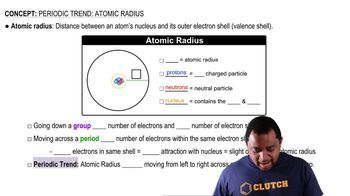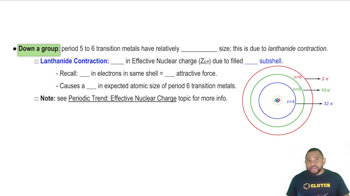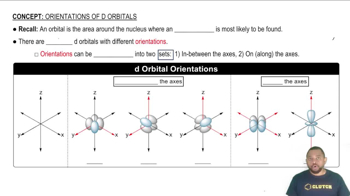Here are the essential concepts you must grasp in order to answer the question correctly.
Atomic Radius
Atomic radius refers to the distance from the nucleus of an atom to the outermost shell of electrons. It generally increases down a group in the periodic table due to the addition of electron shells, which outweighs the increase in nuclear charge. However, trends can vary across periods and groups due to factors like electron shielding and effective nuclear charge.
Recommended video:
Lanthanide Contraction
Lanthanide contraction is the phenomenon where the atomic and ionic radii of the lanthanide series elements decrease with increasing atomic number. This occurs due to the poor shielding effect of the f-electrons, which leads to a greater effective nuclear charge felt by the outer electrons, resulting in a smaller atomic radius as one moves from La to Lu.
Recommended video:
Transition Metals and d-Orbital Electrons
Transition metals, such as Zr and Hf, have d-orbital electrons that contribute to their chemical properties and atomic size. The presence of these d-electrons can lead to a more stable electron configuration, which can result in similar atomic radii across certain transition metals, despite an increase in atomic number, due to effective shielding and electron-electron repulsion balancing out.
Recommended video:




